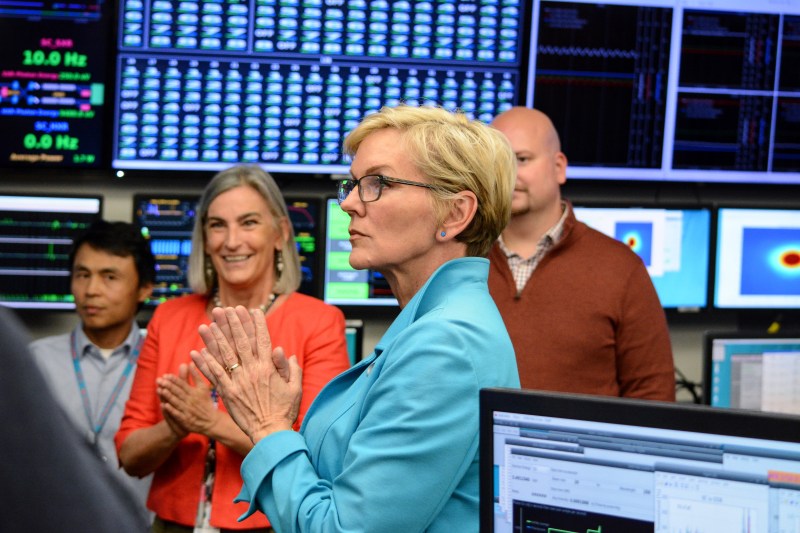U.S. Secretary of Energy Jennifer Granholm visited the SLAC National Accelerator Laboratory for the official launch of LCLS-II last Thursday. LCLS-II is a world-class laser with potential applications in nuclear fusion, medicine and sustainability research.
During her visit, Granholm went on a tour of lab facilities and spoke at the official launch event alongside a panel of SLAC and Department of Energy senior staffers. Granholm congratulated the staff at SLAC on this milestone and praised the collaborative nature of LCLS-II.
“[I] cannot wait to see what truths you discover next in this grand exercise that brings humanity closer together,” Granholm said.
Findings from “the world’s most powerful X-ray laser” — according to SLAC’s press release — are expected to aid in the development of clean fuels, energy research and quantum materials. Granholm said it would also allow scientists to design better catalysts for industrial processes and investigate the extreme conditions at which nuclear fusion occurs.
LCLS-II also has the potential to make large impacts on medical research, as the machine can elucidate 3D interactions between disease-related proteins with atomic-level detail. Through LCLS-II, it would be potentially possible to “prevent the next pandemic” by observing “how drugs interact with pathogens at the smallest molecular level,” Granholm said.
Building a new research tool this powerful does not come cheap. “It’s the culmination of a billion dollars and more than a decade,” said lab director John Sarrao.
During her tour of the facility, Granholm visited the control room, experimental hall, cooling plant and one of the cryomodules. The cryomodules are one of the key differentiating factors between LCLS-II and its predecessor, the Linac Coherent Light Source (LCLS-I).
LCLS-I first debuted to the world in April 2009, generating X-ray pulses a billion times brighter than anything that had come before. Using the machine, scientists from around the world have been able to watch chemical reactions as they happen, observe how electrons move through materials and replicate the behavior of atoms in stars.
Continuing this tradition, LCLS-II “creates unparalleled capabilities that will usher in a new era in research,” according to SLAC’s press release. LCLS-II, uses superconductors to push the number of X-ray pulses per second up from LCLS-1’s 120 to a million. LCLS-II can also produce a near-continuous beam of x-rays up to 10,000 times brighter than LCLS-I.
In LCLS-I, electrons are sent at very high speeds down a room-temperature copper pipe; in LCLS-II, the copper is replaced by a superconductor, which needs to be cooled down to near absolute zero to function properly. The cryomodules, designed and built by Fermilab and Jefferson National Laboratory, are what “cool the revolutionary new accelerator down to temperatures colder than outer space,” according to Asmeret Asefaw Berhe, director of the Office of Science at the Department of Energy.
Both LCLS-I and LCLS-II will run in parallel with one another, expanding on the capabilities of the original machine. One of the Department of Energy’s goals for the project is to aid in the battle against climate change.
“California has such bold goals on meeting on climate change. And this facility is where it all starts … making sure we get it right at the start to be able to meet those big goals,” Granholm said.
The day before her visit to SLAC, Granholm kicked off her quarterly Secretary of Energy Advisory Board meeting in San Francisco to discuss President Biden’s Investing in America agenda for massive clean energy investments.
“Today is really a victory for theory,” Granholm said during a celebratory speech. “With an X-ray source that is 10,000 times brighter than anything before, we’ve expanded the possibility of quantum physics. Scientists from around the world are and will flock to this facility to test the ideas they only dreamed of pursuing.”
“America is now home to the world’s most powerful subatomic camera,” Granholm said.
A previous version of this article incorrectly referred to the SLAC National Accelerator Laboratory as the Stanford Linear Accelerator Center. The Daily regrets this error.
